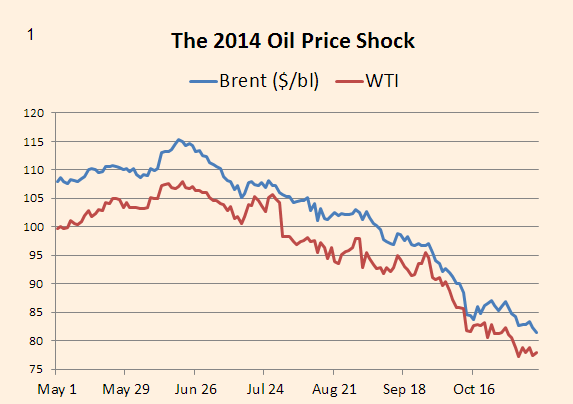Following significant beautification and road repairs across the city of Kingston to welcome president Obama on April 8, 2015, It is safe to say the visit went remarkably well. On his visit to Jamaica, president Obama had bilateral talks with the prime minister of Jamaica, the honorable Portia Simpson Miller.
President during a recent visit to the Bob Marley museum in Kingston, Jamaica. Source of image: PRI.org
In addition, the president met with various Caribbean heads; discussions focused on security, trade and energy. Not to forget, president Obama wow the crowd at a university of the West Indies (UWI).
On January 18, 2015, I wrote an article entitled Could The US Help To Solve Jamaica's Energy Woes?, it spoke to possible benefits of the ongoing shale boom in the US. This, in turn, may help to diversify Jamaica's energy mix, thereby reducing the rate of electricity.
This is a necessary step, as Jamaica seeks to replace up to 300 megawatts of antiquated power plants. These plants have significantly burdened Jamaicans with electricity rates hovering in the region of 40 US cents/kWhr four times the figure in the US, and up to eight times the figure in Trinidad and Tobago.
Efforts to secure lower energy costs have long eluded Jamaica; from a failed push to secure liquefied natural gas out of Trinidad and Tobago, to the EWI debacle. Likely spurring the creation of the electricity sector enterprise team (ESET), the team includes public and private sector individuals, with the aim of securing up to 360 megawatts of new capacity.
It is important to note that commitment was given by two entities to construct 330 megawatts of the aforementioned 360 megawatts of new capacity; Jamaica public service (JPS) has been given the go-ahead to construct a natural gas powered 190 megawatts plant in St Catherine, and 140 megawatts by Aluminum partners of Jamaica (ALPART) in south east St Elizabeth. It's envisioned that both plants should be completed by 2017 or 2018.
A statement of intent was signed on the 8th of April with the US (same time as the presidential visit), the statement of intent is intended to facilitate energy cooperation between the US and Jamaica. The statement of intent can be seen as an overture to something of greater significance. If all goes well, Jamaica should eventually source the long elusive LNG, a commodity (natural gas) that US has in abundance. Plus, the US is said to have the cheapest available natural gas. However, petroleum exports out of north America is restricted by the US, but energy experts foresee a lifting of the restriction by the time aforementioned power plants are completed.
It will be interesting to see what pans out.
http://rjrnewsonline.com/local/eset-approves-330-megawatts-of-additional-power-for-jamaica
Jamaica, US sign energy cooperation agreement. Jamaica Observer.
http://www.jamaicaobserver.com/news/Jamaica--US-sign-energy-cooperation-agreement_18724881
President during a recent visit to the Bob Marley museum in Kingston, Jamaica. Source of image: PRI.org
In addition, the president met with various Caribbean heads; discussions focused on security, trade and energy. Not to forget, president Obama wow the crowd at a university of the West Indies (UWI).
On January 18, 2015, I wrote an article entitled Could The US Help To Solve Jamaica's Energy Woes?, it spoke to possible benefits of the ongoing shale boom in the US. This, in turn, may help to diversify Jamaica's energy mix, thereby reducing the rate of electricity.
This is a necessary step, as Jamaica seeks to replace up to 300 megawatts of antiquated power plants. These plants have significantly burdened Jamaicans with electricity rates hovering in the region of 40 US cents/kWhr four times the figure in the US, and up to eight times the figure in Trinidad and Tobago.
Efforts to secure lower energy costs have long eluded Jamaica; from a failed push to secure liquefied natural gas out of Trinidad and Tobago, to the EWI debacle. Likely spurring the creation of the electricity sector enterprise team (ESET), the team includes public and private sector individuals, with the aim of securing up to 360 megawatts of new capacity.
It is important to note that commitment was given by two entities to construct 330 megawatts of the aforementioned 360 megawatts of new capacity; Jamaica public service (JPS) has been given the go-ahead to construct a natural gas powered 190 megawatts plant in St Catherine, and 140 megawatts by Aluminum partners of Jamaica (ALPART) in south east St Elizabeth. It's envisioned that both plants should be completed by 2017 or 2018.
A statement of intent was signed on the 8th of April with the US (same time as the presidential visit), the statement of intent is intended to facilitate energy cooperation between the US and Jamaica. The statement of intent can be seen as an overture to something of greater significance. If all goes well, Jamaica should eventually source the long elusive LNG, a commodity (natural gas) that US has in abundance. Plus, the US is said to have the cheapest available natural gas. However, petroleum exports out of north America is restricted by the US, but energy experts foresee a lifting of the restriction by the time aforementioned power plants are completed.
It will be interesting to see what pans out.
References:
ESET approves 330 megawatts of additional power for Jamaica. RJR Newshttp://rjrnewsonline.com/local/eset-approves-330-megawatts-of-additional-power-for-jamaica
Jamaica, US sign energy cooperation agreement. Jamaica Observer.
http://www.jamaicaobserver.com/news/Jamaica--US-sign-energy-cooperation-agreement_18724881




